This Is The Only Time To Use A Swivel For Inshore Fishing
- By: Luke Simonds
- on
- Found In: Fishing Tips, Product Reviews, Terminal Tackle
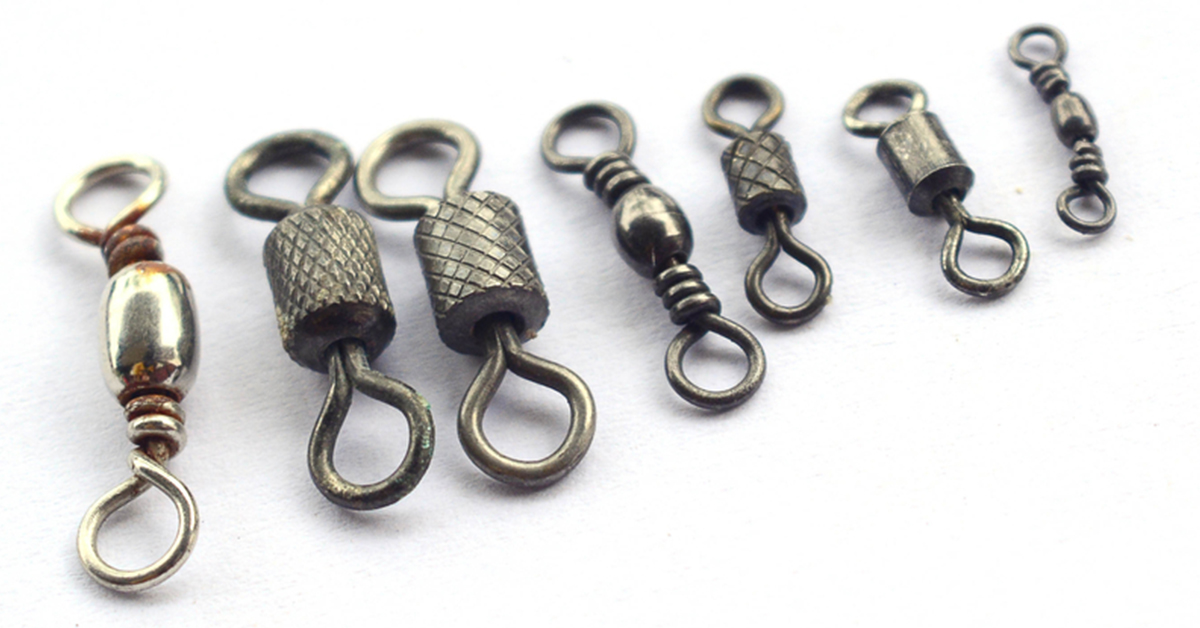
Allow me to introduce you to one of the most misused and misunderstood saltwater fishing tactics known to man…
The Swivel!
We have received numerous questions from our readers (and the Salt Strong Insider Club) regarding the use of swivels on fishing leaders while inshore fishing.
And after hearing so many different questions (and some horrible advice that accompanied in some of the comments), we knew we had to make this blog to clear up when (and when not) to use a swivel.
Here’s a short list of the most common questions about fishing swivels:
- Should I use a swivel?
- If so, where should I place the swivel on the leader assembly?
- If I use a swivel, what knots should I use to tie a swivel to a leader?
So this post will address these 3 questions in hopes that it helps others become more aware of the pros and cons of swivels along with how to most effectively rig them when they’re used.
Note: If you have any tips you’d like to share about using swivels, then please use the Comments section at the bottom of this post so others can learn from you.
Want to catch more inshore fish and be part of a tight-knit fishing club that guarantees your success?
Then check out the Salt Strong Insider Fishing Club here.
Should You Ever Use A Swivel For Inshore Fishing?

Many anglers have asked about using swivels, and the true answer is that it all depends on what type of fishing you’re doing and what sort of bait or lures you’re using.
From my experience (lots of inshore fishing and a fair amount of offshore fishing), I’ve found the best results going without swivels in most situations.
But there are certainly some instances where I believe swivels are necessary, so I absolutely always have at least one swivel in my tackle box at all times.
Since swivels should only be used in specific situations, we’ll cover those first before diving into the reasons why I believe swivels should be avoided in most cases further down in this post.
Why It’s Better To NOT Use Swivels (In Most Cases)
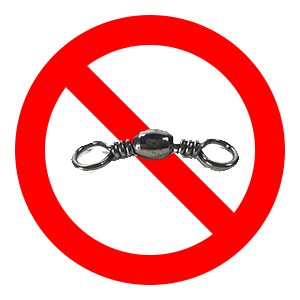
There are multiple benefits to NOT using swivels when it comes to inshore fishing.
Here are the top 3 reasons not to use swivels while inshore fishing (in my opinion).
1. Swivels put the more fragile main line at risk of getting weakened
Although the weight of most swivels is minimal, even the smallest amount of weight can cause the main line to drop lower than it would with a line to line knot which increases the odds of the lighter main line rubbing up against sharp objects on the bottom.
And when fishing shallow oyster bars with long casts, even the slightest dip of the line below the surface can cause the main line to rub up against the very sharp oyster shells which will create weak points in the line that often aren’t known until it’s too late and the biggest fish of the day got off from a broken line.
2. Swivels can damage rod guides
I remember the first time I noticed my brand new line looking like it was getting shredded by some sort of underwater structure.
But I was fishing grass flats so there really wasn’t anything out there that could do the damage that I was seeing…
So I started looking at my rod guides and noticed a slight fracture in the top one which was created a sharp edge inside the guide.
And as my line was getting retrieved, it was getting pulled directly over that sharp edge which was shredding my line.
After asking around trying to learn how that type of fracture was possible, I realized that a common cause of chipped rod guides is from swivels that get reeled up too far and slam up into the guide.
All it takes is one forceful blow, and the rod tip will need to be replaced or else your line will get shredded by any sharp edges from the fracture.
Not fun!
3. Time – It takes longer to tie two knots for the swivel than one line-to-line knot
This one is minimal and of course dependent on how comfortable you are with line to line knots compared to line to swivel knots, but it’s still a factor.
And sometimes every second counts when the fish are feeding.
If you are using a swivel because you can’t tie a line-to-line fishing knot, here is my advice…
LEARN how to tie a solid line-to-line knot (like the FG knot).
However, if you are in a situation when a swivel really is the best solution, here are the answers to the other two most popular questions we get about saltwater fishing swivels.
When It’s OK To Use A Swivel
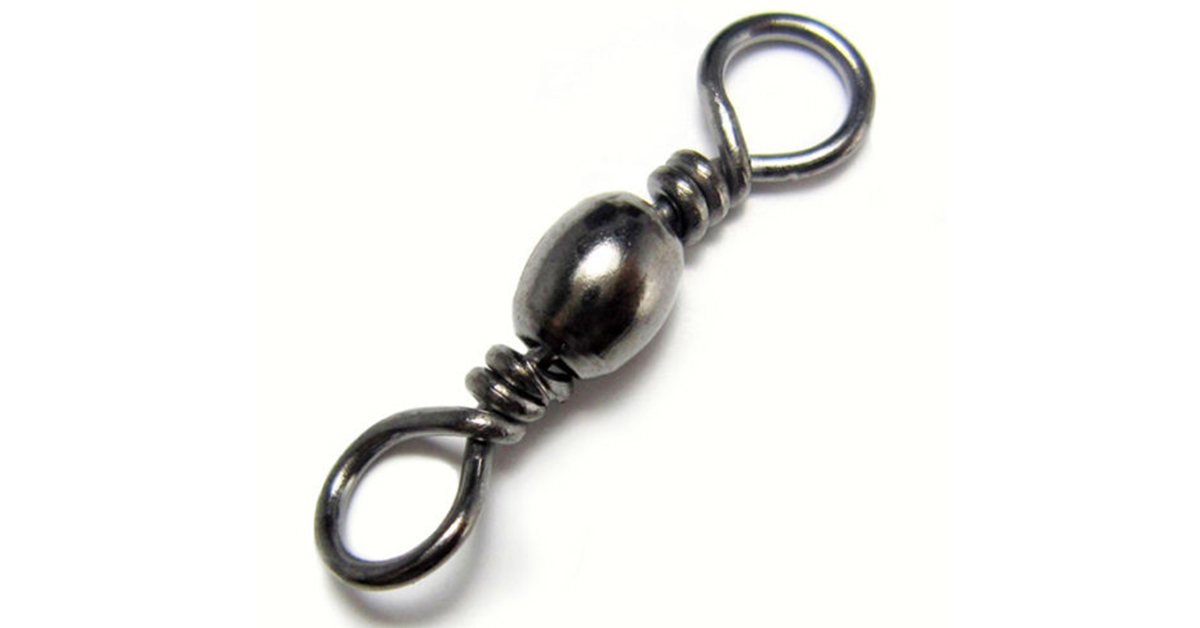
The core benefit of a swivel is to prevent your line from twisting, so situations in which line twists are a risk is when swivels should be used.
Note: Line twists are bad for anglers because twists can weaken the line and they also can cause the line to get itself into knots when casting (ex: those pesky wind knots).
The only situations when I use swivels are:
- When using a casting lure that is prone to twist during the retrieve (ex: weedless spoon)
- When trolling live/dead baits that are likely to twist (ex: trolling ballyhoo while offshore fishing)
- When soaking live/dead baits in areas with current
And when using lures/baits that have a low risk of causing line twists (which is almost always for most inshore anglers), I’ll simply use my line to line knots to make the connection… explained below.
Where Should You Place The Swivel?
In the rare instances when you would use a swivel for inshore fishing, here is my advice.
The ideal place to have a swivel (if you’re going to use one) is at the top of the leader… away from your lure/hook.
This allows for the swivel to be on the line to absorb line twists from the bait without being an unsightly bulk right next to the bait that can cause more fish to get spooked.
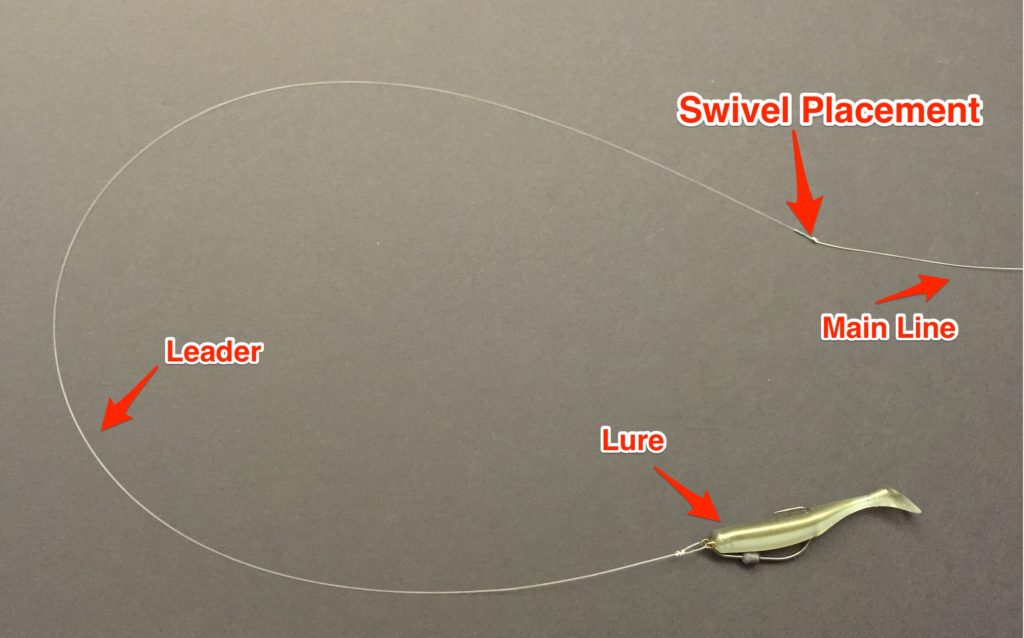
Note: If you’re inshore fishing, then I highly recommend reading a post about tying leaders that I did specifically for inshore anglers (click here).
What Knots To Use For A Swivel?
Before hosting many knot tests over the past year and half since launching Salt Strong, I used to just use whichever knot a trusted friend or family member taught me while growing up.
Because I thought that as long as my knots aren’t unraveling, then they are the top choice.
But I no longer feel that way after seeing firsthand how significant one knot’s breaking point can be compared to another knot the didn’t slip either (sometimes one is over 30% better than another).
So I now always recommend for everyone to make time to test out knots with whichever line you line to use to make sure that you’re maximizing your overall line strength.
Here are links to some of my knot contests which show exactly how to tie the top knots for each type of connection in case you’d like to see the results from my testing:
Line-to-Line Knot Contests
Line to Hook/Lure/Swivel Contests
Conclusion
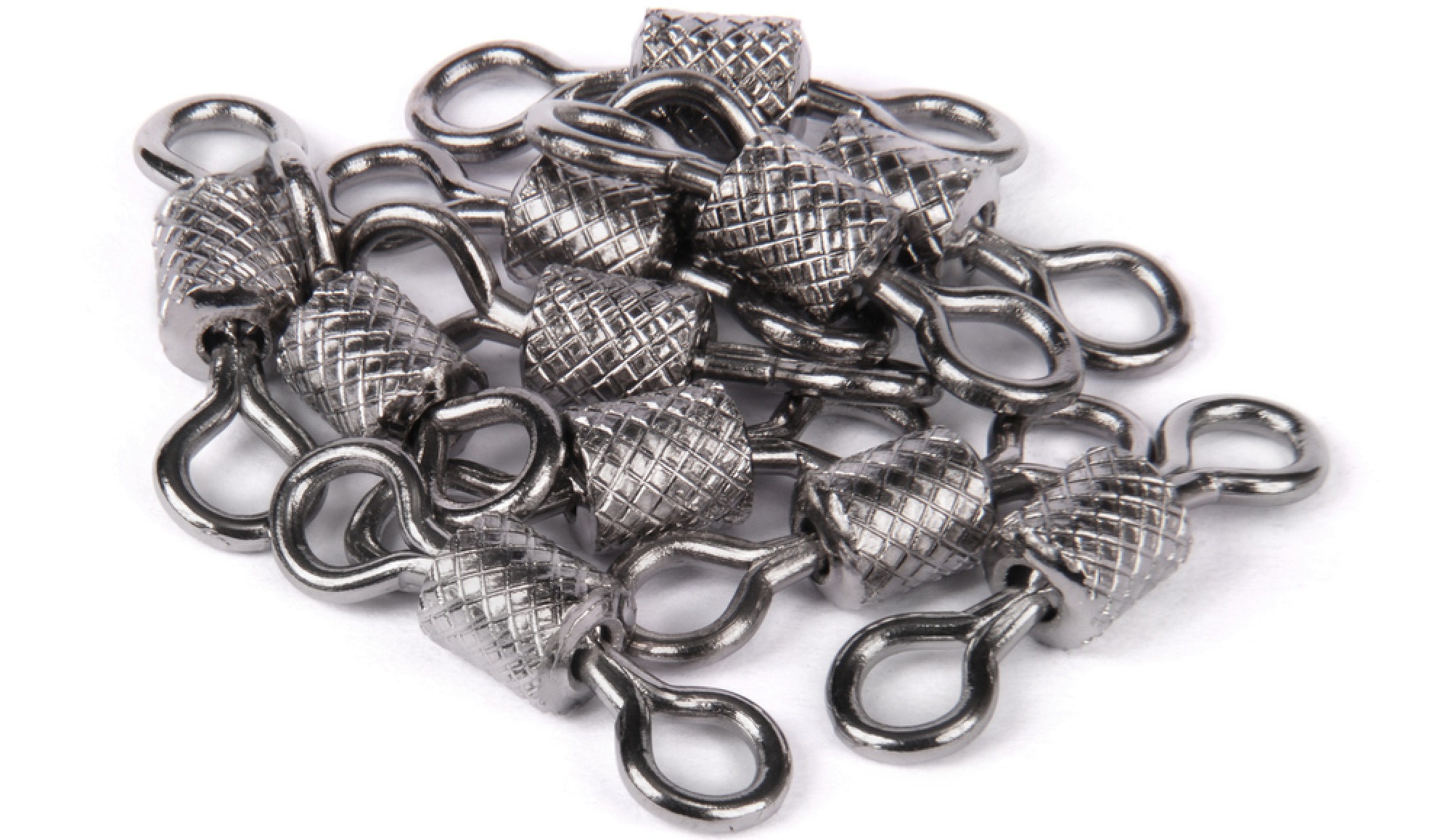
There are many applications for swivels in saltwater fishing, but when it comes to inshore fishing I’ve been finding the best results WITHOUT them (except when using lures that are prone to twisting line or offshore fishing when you have a bait that is twisting).
Although a swivel certainly can’t prevent all twists from moving up into the main line, they certainly can help prevent some twisting.
And if you have a different fishing application where swivels can be helpful, then I’d certainly love to hear about it…
Just use the comments section below so others can benefit from your knowledge too.
Fish On!
Related Posts:
- How To Tie A Fishing Leader for Redfish, Snook, and Trout
- How To Make A Grouper Rig That Saves Time, Money, & Marine Life
Want to catch more inshore fish and be part of a tight-knit fishing club that guarantees your success?
Then check out the Salt Strong Insider Fishing Club here.
P.S. – If you think your angler friends or fishing networks would like to see this, please Tag them or Share this with them. It would mean a lot to me.
Related categories:
STOP WASTING TIME ON THE WATER!
Do what the “SMART ANGLERS” are doing and join the Insider Club.
Here’s what you’ll receive today when you join:
- Weekly fishing reports and TRENDS revealing exactly where you should fish every trip
- Weekly “spot dissection” videos that walk you through all the best spots in your area
- Exclusive fishing tips from the PROS you can’t find anywhere else
- Everything you need to start catching fish more consistently (regardless if you fish out of a boat, kayak, or land).

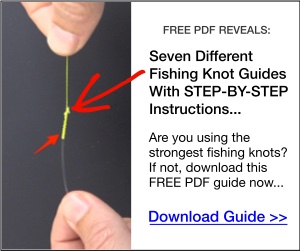







Just wondering what is recommended on attaching weights to the bottom of loop dropper rig. Most people use swivel snaps to attach the weight. If you have a barrel swivel at the top of your rig, why not use a loop to attach the weight? Any advantages using a snap swivel? I’d rather have less hardware on my rig.
I always use a loop to connect to the dropper because I don’t like using any unnecessary hardware. Here’s an article that shows the details: https://www.saltstrong.com/articles/adjustable-dropper-rig/
Hey there. Begginer at fishing here. I usually fish in the Florida Intracoastal, trolling the line on my kayak trolling the DOA Baitbuster lure (the trolling one). Without a swivel my line will get all twisted (yeah, it happen before, I had to replace the whole spool on my spinning reel). Anyway, since I also use some shrimp lures when not trolling, how should I attach the main to the leader? It’s very hard for me to do knots in the middle of the water. Is it ok to use a snap on my main line and just connect the snap to the swivel of my leader? Thanks for your help!
Hey Gabriel, it is ok to use a swivel for trolling… if using a spoon, I’d say to definitely use one because they will often twist up the line. But a baitbuster swims without twisting (unless there are weeds snagged on it), so the risk of twists is low.
If you are focused on minimizing twists, then I recommend the high-end swivels if you’re using braid after seeing the results of this test: https://www.saltstrong.com/articles/ball-bearing-swivel-line-twist-test/
Hey Luke, thanks for the reply! Yeah, couple weeks ago I ruined my line, had to replace the whole spool (just changed to braided) because of line twisting after trolling. Maybe I screwed up when i did the knot. One more question. I have leaders with Baitbuster, leaders with DOA Shrimp and leaders with the hook only. What would be better for a quick change, to do a loop knot on the end of the main line and snaps (regular snap for DOA Shrimp / hook leader; ball bearing snap swivel for Baitbuster) on the end of each leader? Thanks again!!
Hey Gabriel, I used to keep my lures pre-rigged like that, and it became a huge mess in my tackle box so I recommend against doing that. Instead, just get used to tying the non-slip loop knot while leaving a very short tag so that you can get a lot of re-ties before you need to switch out leaders. Here’s a link to the knot (just takes 10 seconds to tie after practice): https://www.saltstrong.com/articles/non-slip-loop-knot/
If I want to cast large live shiners….can I place my hook directly onto a steel leader….
Technically yes. But I wouldn’t recommend a steal leader unless your targeting sharks, mackerel, or some other species with very sharp teeth.
Here’s a video on how to connect a wire to a mono line: https://www.saltstrong.com/articles/best-wire-to-leader-knot/
I can see the fishes. They pick off my lure (sardine) they just don’t bit the hook. Help.
What species of fish are you seeing? And how big are they? Also, what size hook are you using?
What about when bottom fishing and you must use a weight (Carolina Rig) with the weight above the swibrl? Especially in heavy current. If I don’t use a swivel, the weight can damage the knot or slip over the not in my experience. If there is way to do this without a swivel I would be very interested. Let me know.
Here’s what I make for bottom fishing that doesn’t require any swivels and even protects the mainline better from getting damaged by the bottom: https://www.saltstrong.com/articles/how-to-make-a-grouper-rig/
I always have, and always will use a swivel. Almost all of my fishing is surf fishing in the Outer Banks and I have never had a problem with swivels. There were a few times that I wasn’t paying attention and reeled in too much line causing the swivel to hit the top eye but fortunately, I never had any damage.
Never had any issues with swivels in your con list. It’s a rather short list and the list for for pro swivels way out weigh the cons IMO
Exactly right, Chris – their “reasons” not to use a swivel are total baloney.
I’ve been using swivels for 20+years, in my braid to short leader connections. The benefits out weight the issues using Pro or VMC 38-50# swivels.
Time to fish the bay again, I have always used a swivel between my main line and leaders. I find it to keep my lines untangled; I like tri swivels for high low rigs with a soft floating bait. enable me to adjust the depth of my bait.. Works for me
Thanks for your information. I use two swilvils one at the top and one at the bottom for the sinker. This is a double drop loop rig. It seems to keep the leader from tangles. I have a pontoon v bow boat and have not mastered the artficial baits. When the other people on the boat are catching fish on the bottom, I have to fall back t on the double dropper rig.
I fish cut bait from shore in fairly strong current. Usually using 6 or 8 oz weights. Some days 12oz will not hold bottom. My main line is 80 lb 8 strand braid. I stitch a loop splice in the braid then attach a ball bearing swivel using a cats paw (offshore swivel knot) with 5 to 8 turns. I then attach a mono bait rig to the swivel. If I have to break off and retie a new swivel, stitching a loop in the braid on the beach is not practical so I tye a loop using a spider hitch. This is temporary until I can get home and put a splice in. I like braid but could not find a knot that would not slip. I used to use a 12 turn Uni knot. One day I noticed that it was only a 4 turn Uni. That knot was slipping also. Someone suggested splicing a loop. Since then I have not had any “mystery breakoffs” during the cast or when a big fish was fighting.
I’m curious as to how the 12 turn uni knot lost its loops. Did they all get created by going through the loop? If so, that should keep them contained.
So….. here is my journey with fishing knots.
I discovered the Uni knot about 20 years ago. It has served me well with mono. I use a 6 turn Uni with mono up to 25lb. I use a 5 turn with mono up to 50lb and a 4 turn with mono up to 80lb. I haven’t used mono above the weight. I can say this knot in mono has not faailed me. I started playing with braid about 15 years ago. I used a 12 turn Uni in the braid and I had no problem with this knot. My salt water shore fishing setup was an 8 ft med/heavy rod with 40lb braid using a 12 turn Uni to a swivel then a mono bait rig with a 4oz weight. This served me well for years. Then I got a 12ft rod and upped the casting weight to 6oz and bait. I started to get breakoffs while casting or during a fight with a big fish. I did some searching on the internet and came across the term “mystery breakoff”. I upped the braid to 50lb then to 80lb. I still was having mystery breaks. Then one day on the beach just before a cast I glanced at the swivel and saw that the Uni knot was about a 1/4 of the size it should have been. I had a good look at it and it was a perfect Uni but only had about 4 wraps. I retied it, cast out and mulled over what I saw. I thought that upping the lead weight and the centrifugal force of the longer rod was pulling on the knot to the point it was slipping and when it finally let go I called it a mystery break. I was talking with a friend about it. The knot tests I’ve seen slowly inrease pressure and record breaking strenght. I haven’t seen any test testing knots under shock. Shock of casting or shock of fish hitting the bait. He suggested a loop splice. I did a search “fishing braid stitch loop splice”. A South Africa fishing forum came up showing how to do this. I stitched a loop in the braid two years ago and it has not slipped or failed. Two years on one knot is a long time. I also stitched a loop in my son’s braid and his knot lasted 22 months. He was badly hung up and had to break his line. I put a 15 turn spider hitch in the braid and have been watching that knot to see if it’s slipping. So far…nope. Spider hitch is earier to do that stitching a splice…. still watching it.
And to finally answer your question…the twelve turns are inside the loop. I had no problems with the Uni in mono and not in braid until I went to a longer rod and heavier weight thus my impression that the knot slipps under stress in braid.
Sorry for the long story but this is the background to my belief that the knot slips in braid.
………….. Pat B
Thanks so much for the specifics. I’ll be sure to do some shock tests to see how that impacts various knots. Fish On!
Third time a charm…….
I went fishing yesterday and noticed something that I have to zdd as a P.S. When I fish from a saltwater beach I usually use a power cast similar to one called a “off the beach cast ‘. My son uses one called the “pendulum cast “. The majority of people where I fish just lob their bait into the water. Powercasts put more force to the end of the line as you know. Just another piece of the puzzle I forgot to add…….